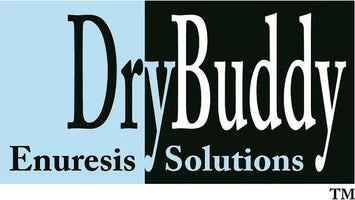Enuresis & Bedwetting
Enuresis & Bedwetting
Enuresis explained
Enuresis is the medical term for uncontrolled bedwetting. It is the unintentional sleepwetting by a healthy child above 5 years of age. For bedwetting advice, the first stop should be to your pediatrician or qualified medical practitioner. When behavioral therapy is recommended, the DryBuddy child-friendly moisture alarm alerts the parent AND child. The parent can then follow the proper hygiene and other recommended procedures. This process reduces the incidence of primary nocturnal enuresis (PNE).
Enuresis: Today
Fortunately, bed wetting is highly treatable, often with behavioral techniques and, if needed, medication. But the question most parents have is how long will it take for their child to stop wetting? The first stop for help is your pediatrician or qualified medical practitioner.
Parents talk of waiting it out until a child stops bedwetting. Few speak publicly about it. However, bedwetting is remarkably common. It affects as many as 7 million children in the U.S. and one-half million in the United Kingdom. It exists in all societies, in all cultures. According to the National Institutes of Health, about 15% of all 5-year-olds, 5% of 10-year-olds, and 1% of 18-year-olds struggle with the embarrassment of nighttime bedwettingknown as nocturnal enuresis.(4) Most will outgrow the problem, even if the parents have a genetic history of enuresis.
Kegel exercises can help to strengthen weak muscles around the bladder. The exercise involves contracting and relaxing the pelvic muscles. A specialist may use biofeedback to tell them if the patient is doing the exercises properly. The procedure is noninvasive. Two sticky patches are placed on the child's bottom and connected to the biofeedback machine. If the child does the exercises properly, the machine lights. A child usually goes for therapy every two to four weeks over the course of three to six months. To be effective, the child must practice at home, three times a day.
Behavioral modification - essentially the use of a bed wetting alarm - is often added to the regimen. The uniqueness of the DryBuddy system is to alert the caregiver, sleeping in the comfort of his or her own bedroom and privacy. The effective wetness signal (alarm) can be an automated light, radio music, an alarm clock, or any other alarm. A parent or caregiver often has to supervise the child when an incident occurs. Various studies suggest that enuresis or bedwetting alarms are the preferred method for treatment. Committment on the part of the patient and the caregiver is essential to improving the success rate of alarm therapy. The success of alarms requires a motivated child and family plus a significant time and effort committment of 3 to 6 months.(2)
Aside from the laundry loads, bed-wetting can become such a big self esteem issue that the child will bypass sleepovers, daycare naps, camping trips or family vacations. It may be time to try a new therapy. Wetness alarms, sometimes called moisture sensors or bedwetting alarms, can help to increase the number of dry nights... or remedy bedwetting sooner. Typical success with wetness alarms (behavioral therapy) is 25% success to stop nighttime wetting in 30 days, 50% in 60 days, and 90% in 90 days.(1)
Additional articles on Enuresis and Bedwetting can be found here.
Additional articles on Enuresis and Bedwetting Alarms can be found here.
